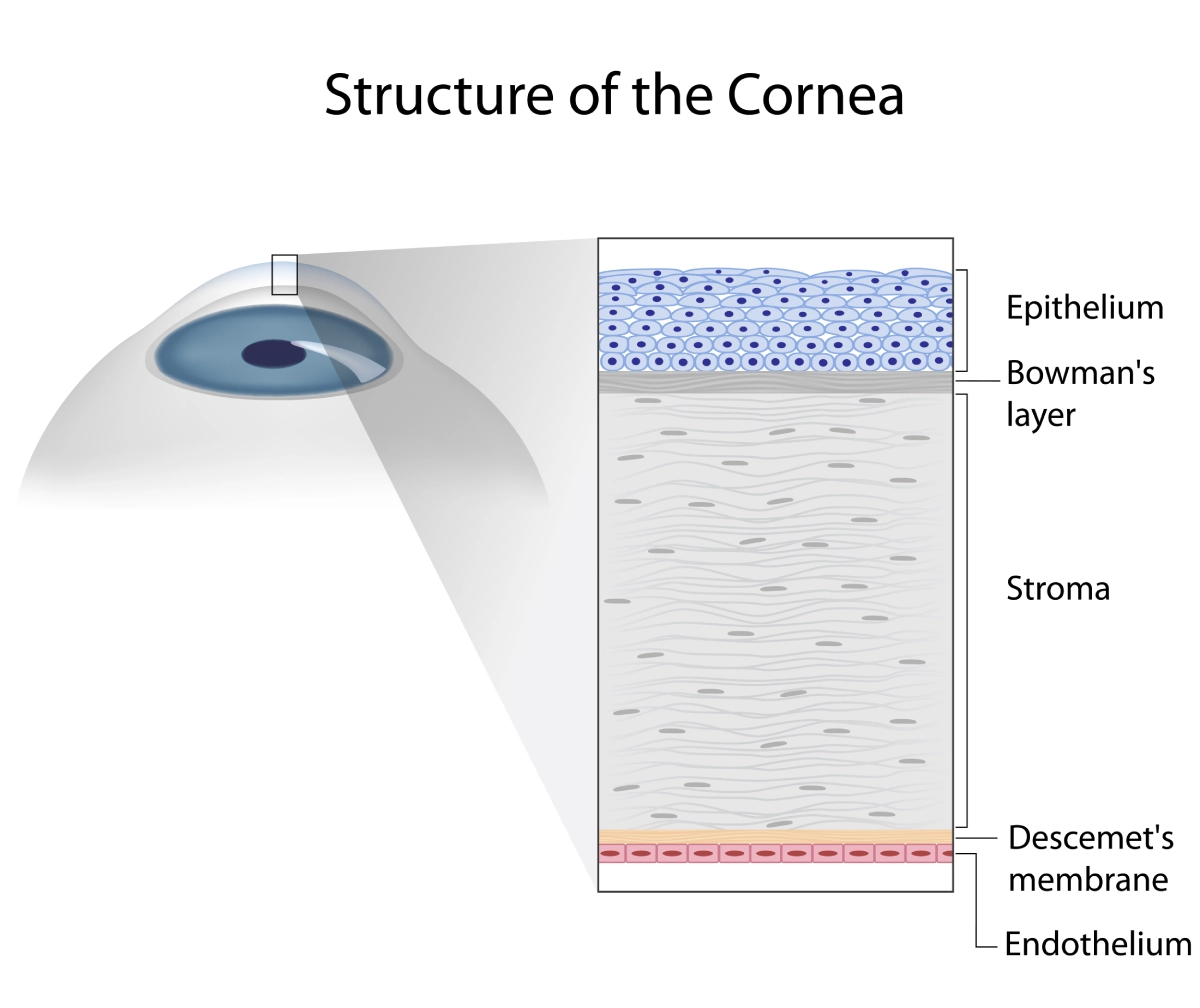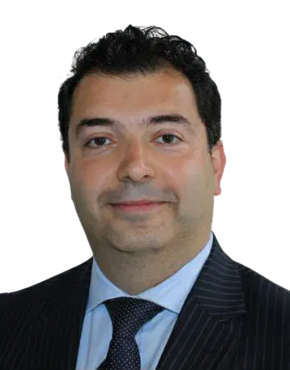DSAEK / DMEK
These procedures are partial thickness corneal transplants which replace the innermost portion of the cornea rather than the full thickness of the cornea as in standard corneal transplants.
Layers of the Cornea – Structure & Function Explained
The cornea is the transparent, dome-shaped front surface of the eye. It is vital in focusing light and protecting the inner eye structures. Understanding the layers of the cornea can help patients better grasp certain eye conditions and treatments, especially those involving corneal surgery.
The cornea has five key layers, each with a specific role in maintaining healthy vision and eye protection.
- Epithelium: the outer layer that protects the eye from dust, germs, and minor injuries. It heals quickly if damaged.
- Bowman’s Layer: a thin, strong layer that supports the epithelium and adds strength to the cornea.
- Stroma: the thickest part of the cornea, made of collagen and water. It gives the cornea its shape and clarity.
- Descemet’s Membrane: a thin barrier that protects the inside of the cornea and helps prevent infection.
- Endothelium: the inner layer that keeps the cornea clear by pumping out extra fluid. Damage here can affect vision and may require treatment.

DSAEK Surgery
What Does DSAEK Surgery Involve?
DSAEK surgery (Descemet’s Stripping Automated Endothelial Keratoplasty) is carried out when the eye’s innermost corneal layer (the endothelium) has failed. This is a layer of cells that work as a pump, draining fluid out of the eye so when the pump fails, the cornea becomes swollen and cloudy, reducing vision.
The surgery is a form of corneal transplant which involves the use of human donor corneal tissue. The endothelium is replaced with the donor graft, leaving only the healthy part of the cornea in place.
The procedure is done through a small incision in the side of the cornea and takes under an hour.
What Are The Benefits Of DSAEK Surgery?
This surgery should improve your vision after one to two months with further improvement over a longer time. DSAEK surgery is like another corneal procedure called DMEK (Descemet’s membrane endothelial keratoplasty), but in DSAEK the endothelium includes tissue from the stroma (one of the layers in the cornea).
What Are The Possible Complications Of DSEK Surgery?
As with all surgical procedures, there can be some risks. With DSAEK surgery, there is a risk of corneal graft rejection, but this occurs less often than with other forms of corneal graft. There is also the risk of glaucoma.
At The McIndoe Centre, we do everything we can to minimise the risk of complications. Your surgeon will talk to you about any possible specific complications before you decide to have your operation.
"I had stopped reading anything other than large print on the computer and slowly, life was become more and more restricted. Mr Hamada's skill and advice changed all that. He recommended DSAEK surgery on both eyes, which proved to be painless with virtually no discomfort. I even got to lie on my back and do nothing for a couple of days. The world has come alive again - colours are vibrant and I can now read newspapers, even wearing my glasses."
DSAEK Patient
DMEK Surgery
What Does DMEK Surgery Involve?
DMEK surgery (Descemet’s Membrane Endothelial Keratoplasty ) is carried out when the eye’s innermost corneal layer (the endothelium) has failed. This is a layer of cells that work as a pump, draining fluid out of the eye so when the pump fails, the cornea becomes swollen and cloudy, reducing vision.
The surgery is a form of corneal transplant which involves the use of human donor corneal tissue. The endothelium is replaced with the donor graft, leaving only the healthy part of the cornea in place.
The procedure is done through a small incision in the side of the cornea and takes under an hour.
What Are The Benefits Of DMEK Surgery?
This surgery should improve your vision after one to two months with further improvement over a longer time. DMEK is like another corneal procedure called DSEK (Descemet’s stripping endothelial keratoplasty) but with DMEK, it is only the backing layer (Descemet’s membrane) that is removed from the donor.
Recovery After DMEK Surgery
After the operation, the eye will have a patch and there should be minimal discomfort. You should lie on your back for the first 24 hours then your surgeon will remove the patch and examine your eye. You will be given antibiotic and steroid drops to prevent infection and help healing.
Recovery After DMEK Surgery
After the operation, the eye will have a patch and there should be minimal discomfort. You should lie on your back for the first 24 hours then your surgeon will remove the patch and examine your eye. You will be given antibiotic and steroid drops to prevent infection and help healing.
What Are The Possible Complications Of DMEK Surgery?
As with all surgical procedures, there can be some risks. With DMEK surgery, there is a risk of corneal graft rejection, but this occurs less often than with other forms of corneal graft.
Your surgeon will discuss all the benefits and risks in full at your consultation. At the McIndoe Centre, we do everything we can to minimise the risk of complications.
Consultants that perform this procedure
Find out more about the McIndoe Centre
We provide outstanding patient experiences
As a nationally recognised hospital of excellence in plastic, reconstructive, ophthalmic and maxillofacial surgery, we have demonstrated ourselves to be: effective, responsive, caring, safe and well-led. Recently rated ‘good’ by the CQC, we are committed to treating our patients and each other with kindness, respect and dignity resulting in life-changing outcomes.
Patient testimonials
Find out what it’s like to be a patient, from the people who matter the most.










